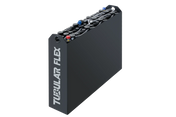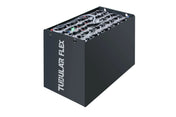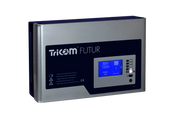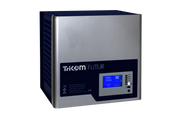If your forklift battery is completely empty, your industrial truck will stop operating – and with it important work processes.
Deep discharge not only leads to downtime, but can also cause permanent damage to the battery. However, those who react quickly and know the correct charging procedure can often prevent a total failure.
In this article, you will learn how to professionally regenerate a deeply discharged forklift battery, when it is worthwhile to replace the cells , and when a used battery is more economical.
Causes of deep discharge
Deep discharge occurs when a battery's voltage falls below the minimum permissible voltage. Common causes include:
- Excessive operating times without intermediate charging
- Incorrect charging parameters or unsuitable charger
- Defective chargers or damaged charging cables
- High ambient temperatures that reduce available capacity
Repeated deep discharges lead to irreversible sulfation of the plates – even through regeneration, usually only around 80% of the original capacity can be restored.
First aid for a deeply discharged battery
- Safety first: Wear acid-resistant gloves, safety goggles, and ensure the loading area is well ventilated.
- Check cell voltage: Measure at idle and under load. If the voltage is below 2.0 V/cell under load (or below 1.8 V when open ), there is an acute risk of lead sulfate formation.
- Slow recovery charge: Start with a current of approximately 5% of the C5 rated current (C/20). Example: For a 500 Ah battery, the initial current is around 25 A. Charge until each cell reaches at least 2.0 V.
- Carry out equalization charging: After the basic charge, increase the voltage to approx. 2.6 V/cell and hold it for 2-4 hours . This phase resolves incipient sulfation and restores the tension level between old and weaker cells.
- C5 Capacity Test: Then perform a full discharge test according to C5 to determine the actual remaining capacity.
Tip: Use modern chargers with trickle charge function and temperature compensation . These automatically prevent deep discharges and significantly extend the life of your battery. Read more about this in the article How to charge a forklift battery correctly .
Replacing battery cells – when and how?
If only individual cells in your battery are affected, it's often worth replacing them instead of buying new ones. Here's how to proceed:
- Determine cell type: Based on the designation on the type plate (e.g. 2 PzS 160, 5 PzS 400).
- Order suitable cells: In our shop you will find battery cells for 2 V to 10 V systems in all common capacities.
- Installation & balancing: After replacement, charge all cells evenly (equalizing charge ~ 2.6 V/cell) to ensure voltage equality.
This saves you up to 50% of the cost compared to a new battery and significantly reduces the amount of material used.
Alternative: Used battery as a complete solution
If your battery is severely worn or several cells are irreparably damaged, a used forklift battery is often the more economical solution:
- C5 tested capacity: Each battery is tested and documented for actual capacity.
- Fast availability: Available immediately from stock, including test report.
- Cost savings: Up to 50% cheaper than new batteries .
Prevention: How to avoid deep discharges
- Recharge regularly: Recharge briefly during breaks or shift changes.
- Maintenance & Tests: Perform a full charge and capacity test every 3–6 months.
- Check chargers: Have current and voltage values checked regularly according to the manufacturer's specifications.
- Use battery monitoring: Modern systems monitor state of charge (SOC) and temperature in real time.
- Automatic deep discharge protection systems: Smart BMS or monitors automatically disconnect the battery at SOC < 20% or provide early warning – thus reliably preventing deep discharge.
Conclusion
A deeply discharged forklift battery can usually be revived with the right approach - early voltage control , gentle recharging (C/20), subsequent equalization charging and regular maintenance are required. Repeated deep discharges cause permanent sulfation, which is only partially reversible. Those who use modern charging and monitoring systems protect their batteries, operations and budgets from unnecessary downtime in the long term.







